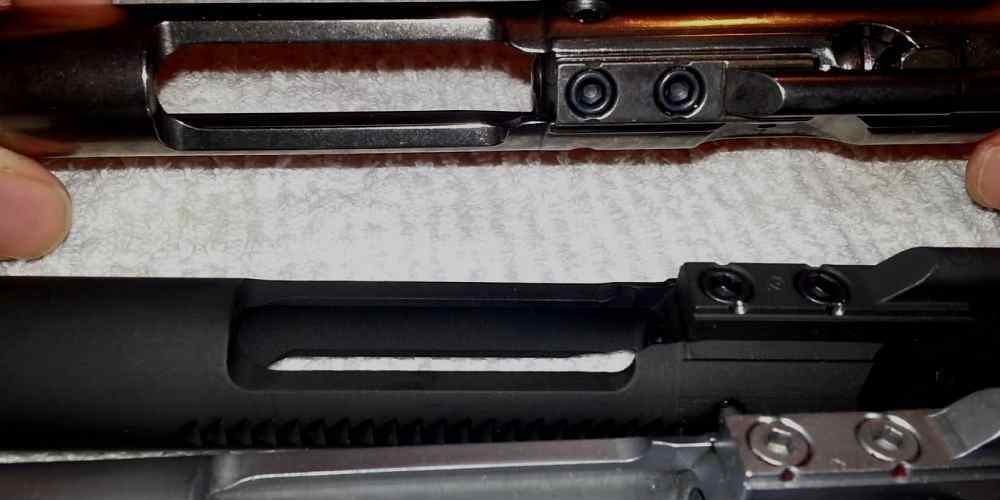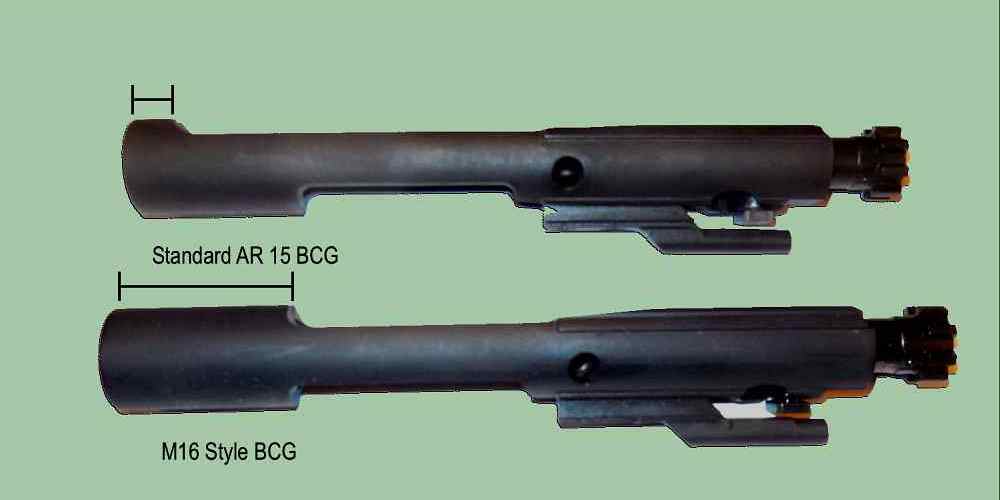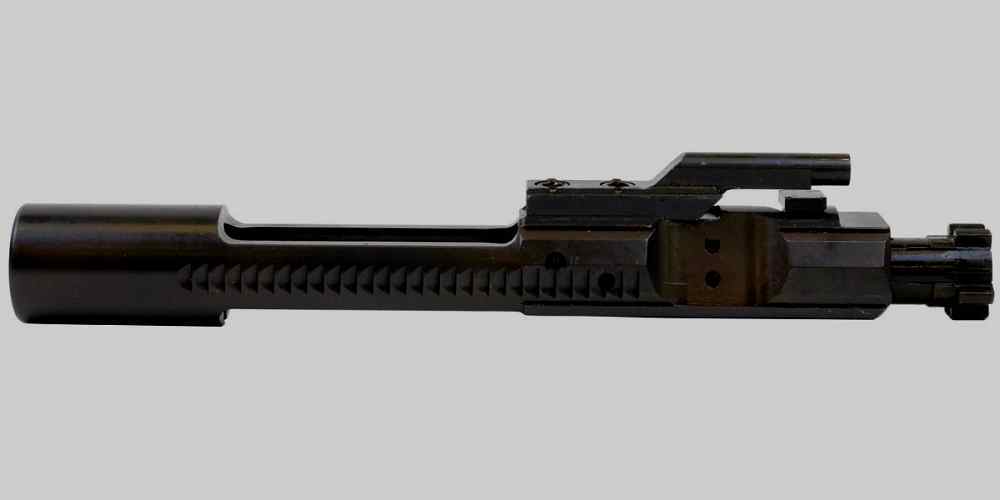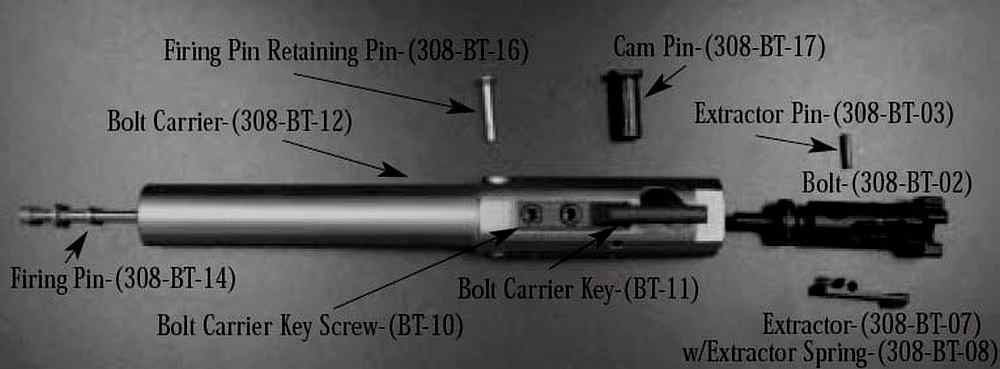“Mil-Spec vs. Commercial BCGs: Know the Quality Difference”
Mil-Spec BCGs: Understanding the Standard
When it comes to choosing a bolt carrier group (BCG) for your AR-15 rifle, you may come across the terms “Mil-Spec” and “commercial” BCGs. But what exactly do these terms mean, and how do they differ from each other? In this article, we will explore the differences between Mil-Spec and commercial BCGs to help you make an informed decision when selecting the right BCG for your rifle.
Let’s start by understanding what Mil-Spec BCGs are. Mil-Spec, short for military specification, refers to the standards and specifications set by the U.S. military for various equipment, including firearms. Mil-Spec BCGs are built to meet these stringent standards, ensuring reliability, durability, and compatibility with military-issue rifles.
Mil-Spec BCGs are typically made from high-quality materials such as Carpenter 158 steel for the bolt and 8620 steel for the carrier. These materials are heat-treated and shot-peened to increase their strength and resistance to wear and tear. Mil-Spec BCGs also feature a chrome-lined interior to reduce friction and improve reliability.
In addition to the materials used, Mil-Spec BCGs also adhere to specific dimensions and tolerances set by the military. This ensures that Mil-Spec BCGs are compatible with a wide range of AR-15 rifles and can function reliably in various conditions.
On the other hand, commercial BCGs are not held to the same strict standards as Mil-Spec BCGs. While commercial BCGs may still be made from high-quality materials, they may not meet the same level of durability and reliability as Mil-Spec BCGs. Commercial BCGs may also vary in dimensions and tolerances, making them less compatible with certain AR-15 rifles.
One of the main differences between Mil-Spec and commercial BCGs is their price. Mil-Spec BCGs are typically more expensive due to the higher quality materials and manufacturing processes used. However, the added cost is often worth it for the increased reliability and longevity that Mil-Spec BCGs offer.
When choosing between Mil-Spec and commercial BCGs, it is important to consider your specific needs and budget. If you are a serious shooter who values reliability and durability, investing in a Mil-Spec BCG may be the best option for you. However, if you are on a tight budget or do not require the same level of performance as a Mil-Spec BCG, a commercial BCG may be a more cost-effective choice.
In conclusion, Mil-Spec BCGs are built to meet the stringent standards set by the U.S. military, ensuring reliability, durability, and compatibility with military-issue rifles. Commercial BCGs, on the other hand, may not meet the same level of quality and consistency as Mil-Spec BCGs. When choosing between Mil-Spec and commercial BCGs, it is important to consider your specific needs and budget to make the best decision for your AR-15 rifle.

Commercial BCGs: Features and Variations
When it comes to choosing a bolt carrier group (BCG) for your AR-15 rifle, you may come across two main options: mil-spec and commercial BCGs. While both types serve the same purpose of cycling rounds in your firearm, there are some key differences between the two that you should be aware of before making a purchase.
Commercial BCGs are typically manufactured by companies that cater to the civilian market, whereas mil-spec BCGs are made to meet the strict specifications set by the military. This means that commercial BCGs may have some variations in design and materials compared to their mil-spec counterparts.
One of the main differences you may notice between commercial and mil-spec BCGs is the finish. Commercial BCGs often come in a variety of finishes, such as nickel boron or titanium nitride, which can provide enhanced lubricity and corrosion resistance. Mil-spec BCGs, on the other hand, are typically finished with a phosphate coating, which is known for its durability and resistance to wear.
Another key difference between commercial and mil-spec BCGs is the materials used in their construction. Commercial BCGs may be made from a variety of materials, such as 8620 steel or 9310 steel, which can offer different levels of strength and durability. Mil-spec BCGs, on the other hand, are typically made from Carpenter 158 steel, which is known for its high strength and reliability.
In addition to the finish and materials used, commercial BCGs may also feature some design variations compared to mil-spec BCGs. For example, commercial BCGs may have enhanced features such as forward assist serrations or a lightweight design to reduce overall weight. These features can provide added functionality and customization options for the civilian shooter.
Overall, commercial BCGs offer a wide range of features and variations that cater to the needs and preferences of civilian shooters. Whether you are looking for a specific finish, material, or design, there is likely a commercial BCG out there that meets your requirements.
When choosing between a mil-spec and commercial BCG, it ultimately comes down to personal preference and intended use. If you are looking for a BCG that meets the strict specifications set by the military, a mil-spec BCG may be the best option for you. However, if you are looking for a BCG with enhanced features and customization options, a commercial BCG may be more suitable.
In conclusion, both mil-spec and commercial BCGs have their own set of features and variations that cater to the needs of different shooters. By understanding the differences between the two, you can make an informed decision when choosing a BCG for your AR-15 rifle. Whether you prioritize durability, customization, or functionality, there is a BCG out there that meets your requirements.
Mil-Spec vs. Commercial BCGs: Key Differences
When it comes to choosing a bolt carrier group (BCG) for your AR-15 rifle, you may come across the terms “Mil-Spec” and “Commercial” BCGs. But what exactly do these terms mean, and how do they differ from each other? In this article, we will explore the key differences between Mil-Spec and Commercial BCGs to help you make an informed decision when selecting the right BCG for your rifle.
Mil-Spec BCGs are designed to meet the specifications set by the military for their rifles. These specifications are strict and ensure that the BCG meets certain standards for quality, durability, and performance. Mil-Spec BCGs are typically made from high-quality materials such as Carpenter 158 steel or 9310 steel, which are known for their strength and durability. They are also subjected to rigorous testing to ensure that they can withstand the harsh conditions of combat.
On the other hand, Commercial BCGs are designed for civilian use and may not meet the same stringent specifications as Mil-Spec BCGs. Commercial BCGs are often made from materials such as 8620 steel, which is less expensive but may not be as durable as the materials used in Mil-Spec BCGs. Commercial BCGs may also not undergo the same level of testing as Mil-Spec BCGs, which could affect their reliability and performance.
One of the key differences between Mil-Spec and Commercial BCGs is the finish. Mil-Spec BCGs are typically finished with a phosphate coating, which provides excellent corrosion resistance and lubricity. This coating helps to reduce friction between moving parts and ensures smooth operation of the BCG. Commercial BCGs, on the other hand, may be finished with a different coating such as nitride or nickel boron, which may not offer the same level of corrosion resistance or lubricity as a phosphate coating.
Another important difference between Mil-Spec and Commercial BCGs is the staking of the gas key. The gas key is a critical component of the BCG that helps to direct gas from the barrel to cycle the action of the rifle. In Mil-Spec BCGs, the gas key is staked to prevent it from coming loose during firing. This ensures that the BCG remains in proper alignment and functions correctly. Commercial BCGs may not have the gas key staked, which could lead to reliability issues if the gas key were to come loose.
In terms of price, Mil-Spec BCGs are typically more expensive than Commercial BCGs due to the higher quality materials and manufacturing processes used in their production. While Commercial BCGs may be more budget-friendly, they may not offer the same level of performance and reliability as Mil-Spec BCGs.
In conclusion, when choosing a BCG for your AR-15 rifle, it is important to consider the differences between Mil-Spec and Commercial BCGs. Mil-Spec BCGs are designed to meet strict military specifications for quality and performance, while Commercial BCGs may not offer the same level of durability and reliability. Ultimately, the choice between Mil-Spec and Commercial BCGs will depend on your budget and intended use for your rifle.
Pros and Cons of Mil-Spec BCGs
When it comes to choosing a bolt carrier group (BCG) for your AR-15, you may come across two main options: mil-spec and commercial. While both types of BCGs serve the same purpose of cycling rounds through your rifle, there are some key differences between the two that may influence your decision.
Mil-spec BCGs are built to meet the strict standards set by the military for their firearms. These BCGs are typically made from high-quality materials and undergo rigorous testing to ensure they can withstand the demands of combat situations. They are designed to be durable, reliable, and easy to maintain, making them a popular choice among military personnel and serious shooters.
One of the main advantages of mil-spec BCGs is their consistency and reliability. Because they are built to strict specifications, you can trust that a mil-spec BCG will perform consistently every time you pull the trigger. This can be crucial in high-pressure situations where reliability is key.
Another advantage of mil-spec BCGs is their compatibility with a wide range of AR-15 rifles. Since they are built to meet military standards, mil-spec BCGs are designed to fit most AR-15 platforms without any modifications. This can make it easier to find replacement parts or upgrade your rifle in the future.
However, there are some drawbacks to mil-spec BCGs as well. One of the main disadvantages is their cost. Mil-spec BCGs are typically more expensive than commercial BCGs due to the higher quality materials and manufacturing processes used in their production. This can be a deterrent for shooters on a budget or those who don’t require the level of durability offered by mil-spec BCGs.
Additionally, mil-spec BCGs may be overkill for some shooters who don’t plan on putting their rifles through extreme conditions. If you are a casual shooter or only use your AR-15 for target practice, a commercial BCG may be more than sufficient for your needs.
Overall, mil-spec BCGs offer a high level of reliability and durability that can be appealing to serious shooters and military personnel. However, the higher cost and potential overkill for some shooters may make commercial BCGs a more practical choice for others.
In conclusion, the decision between mil-spec and commercial BCGs ultimately comes down to your individual needs and preferences as a shooter. If you value consistency, reliability, and durability above all else, a mil-spec BCG may be the right choice for you. However, if you are on a budget or don’t require the level of performance offered by mil-spec BCGs, a commercial BCG may be a more practical option. Whichever type of BCG you choose, make sure to do your research and select a reputable manufacturer to ensure you are getting a high-quality product that will meet your needs on the range or in the field.
Pros and Cons of Commercial BCGs
When it comes to choosing a bolt carrier group (BCG) for your AR-15 rifle, you may come across two main options: mil-spec and commercial BCGs. While both types of BCGs serve the same purpose of cycling rounds in your rifle, there are some key differences between the two that you should consider before making a purchase.
One of the main advantages of commercial BCGs is their availability and affordability. Commercial BCGs are widely available from a variety of manufacturers and retailers, making it easy to find one that fits your budget and preferences. Additionally, commercial BCGs are typically less expensive than mil-spec BCGs, making them a popular choice for budget-conscious shooters.
Another advantage of commercial BCGs is their customization options. Many manufacturers offer commercial BCGs with different finishes, coatings, and materials, allowing you to personalize your rifle to your liking. Whether you prefer a nickel boron finish for easy cleaning or a lightweight titanium BCG for reduced recoil, there are plenty of options available to suit your needs.
Commercial BCGs also tend to be lighter in weight than mil-spec BCGs, which can be beneficial for shooters who prioritize maneuverability and speed. A lighter BCG can help reduce the overall weight of your rifle, making it easier to carry and handle during long shooting sessions or competitions. Additionally, a lighter BCG can contribute to faster cycling and reduced felt recoil, improving your overall shooting experience.
However, there are some drawbacks to consider when choosing a commercial BCG over a mil-spec BCG. One of the main disadvantages of commercial BCGs is their potential lack of durability and reliability compared to mil-spec BCGs. Commercial BCGs may be made with lower-quality materials or manufacturing processes, which can lead to issues such as premature wear, breakage, or malfunction.
Another drawback of commercial BCGs is their compatibility with certain AR-15 rifles. Some commercial BCGs may not be compatible with certain AR-15 models or configurations, leading to fitment issues or poor performance. It’s important to research and ensure that the commercial BCG you choose is compatible with your specific rifle to avoid any potential problems down the line.
In conclusion, commercial BCGs offer a variety of advantages such as availability, affordability, customization options, and lighter weight. However, they may also come with drawbacks such as potential durability and compatibility issues. Before making a decision, it’s important to weigh the pros and cons of commercial BCGs and consider your specific needs and preferences. Ultimately, the best BCG for your AR-15 rifle will depend on your shooting style, budget, and desired features.







